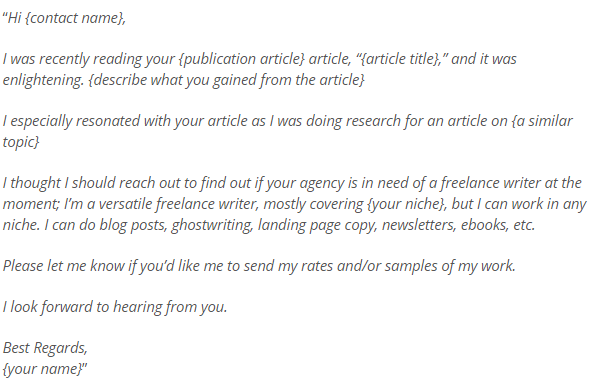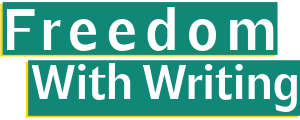By Caleb Kentai
Growing, up, writing was always a fun affair. I could whip words into paragraphs at a pretty young age. I could crank up a blistering op-ed in high school, good enough to win me several writing competitions, and the admiration of my friends. In college, I was the go-to writer because I loved doing it, but I never thought of it as a business, until I got fired from my first job.
Everyone starts somewhere. I started with content mills (read Upwork and the rest). It was an easy fix at the time. All the jobs are in one place, you need to send in a bid, and if you are lucky, the owner of the job will pick you.
But I should say two things that should get you walking out of content mills.
– Most of the jobs are boring. Writing should be fun. It should spark both your creativity and your ability to think. Content mills have all the drab jobs in store.
I am a literature graduate, but I have found myself immersed in cranking out boring product reviews, writing for clients who would reply with “ You should do a revision on the whole article.”
– If boring is not enough, they pay peanuts. On average, most of the jobs you will find on Upwork, those that a new writer would probably get paid $5 for 1000 dollars. I worked this for a whole year, doing 3000 words a day to pay a fraction of my bills
I tend to think I had no option at the time because rent was beckoning, my student loan repayments were getting late, or I had done too little research before jumping into the field to know how much I was worth.
When did things turn around?
My journey started with joining LinkedIn, and a subscription to Freedom with Writing. Let`s say it dawned on me that the good jobs are not with the people that bring them to you, they are where you take your heart. Suddenly, it seemed plausible to start enjoying writing and to earn from it.
My last article paid me $150 for 1000 words. I should say that the limit was a minimum of 600 words, but I always find myself going that extra mile for the same rate. Right before writing this article, a pitch I sent to Penny Hoarder on cutting costs got accepted, never mind that the same editor had rescinded on my first pitch.
How did I do it?
I improved my activity on LinkedIn. Everyone says you should improve their LinkedIn CV, but your CV is not visible to anyone on LinkedIn if you don`t have anything worth viewing. You should post content that you are sure will pique the brains of both editors and your intended market. Just get writing.
I would often post my ideas on pitching as a topic. When people see you as a credible writer, they want to connect to you.
I started a series on the ‘Art of pitching’ while still learning about it. While my posts, at the start received paltry, if not discouraging traffic, it did not take a month for the attention to start trickling in, and with the attention, came credibility.
I also gave up on the mediocrity of content mills and got pitching. Freedom with Writing has always been a minefield of opportunities for me. I make sure to read all the new opportunities every day. Once you identify an opportunity you would be appropriate with, get pitching. If the editor doesn’t get back to you, it doesn’t mean that you shouldn’t pitch again. Opportunities will always crop up.
How do you get that perfect pitch or query letter?
I earned $100 from a recent 1000 word writing job. It`s still small, compared to what already established writers make, but I should also say that I have once made $500 from 1000 words doing ghostwriting on business topics. Today, I woke up to an offer on Linkedin worth $200.
This is a “template” of the basic pitch I use to contact potential clients:

5 short pitching hacks to land you high paying gigs.
- Pitching is not always about selling yourself as a perfect fit. If you always do that, you would always sell yourself short.
- If you sell yourself as a “ content writer,” no editor would have the impetus to reply to your email. You don’t answer to their needs at the time. But if you send the editor an email detailing the opportunity in mind, and what you will answer in your article, they will be happy to get back to you. Above all, focus on filling the editor’s needs.
- It is not about quantity, it is the quality that matters. You don’t have to send 100 emails a day to get writing work. Even three high-quality ones make the difference. While the conversion rates of most “100 pitch a day” writers stand at a paltry 5%, if you correctly identify the opportunities, you will get a larger number of replies per batch of emails.
- Remember to connect with the face on the other side. Get to know them before you send out that pitch. If you connected with them on Linkedin, for instance, commented on their posts, and built a rapport before the pitch, they will have the feeling that they already know you.
- Keep your pitch short and concise. Reserve your writing energy for the article, the pitch is just an important formality. Be clear about what you want to deal with on your article, and the issues you will handle.
I should say that you will always receive plenty of rejection emails, especially while starting out. You should be happy that you receive replies to your queries. It doesn’t mean that you should not pitch to the same editor once more. If you see an opportunity, do send them an email.
Caleb Kantai is a freelance writer based in Kenya. He loves working as a ghostwriter for business topics, travel writing and reviews.
